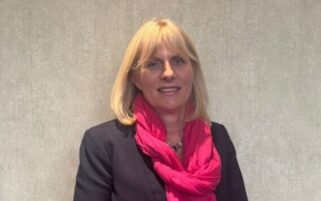Graham Box
DPhil (Oxon)
Chief Executive
National Association for Patient Participation
A former business consultant turned academic turned NHS manager, Graham is now part-time Chief Executive of the National Association for Patient Participation. He sees real engagement with communities as an essential aspect of improving health. Graham has a doctorate from Oxford University in policy responses to lifestyle illness
In my view, there are two types of practices: those that do and those that don’t. Those that do are growing in number; those that don’t are increasingly challenged to do so. Of course, I am talking about having a Patient Participation Group (PPG).
My starting point is to share some of my learning from the many workshops that I have enjoyed running over the last couple of years, involving at least a couple of hundred practice managers. These have tended to be about engaging with patients in commissioning activities or in the broader life of the practice. One of my key messages is that PPGs should be engaged not on the periphery of activity but at its heart. Otherwise, their contribution will inevitably be marginal.
As part of that discussion, I have often asked audiences about the biggest challenges facing practice managers within general practice. Unscientifically, I would judge that the five most common responses are dealing with the primary care trust (PCT), managing change, government targets, recruitment and meeting demand. It is extremely rare for practice managers to see improving health or tackling health inequalities as one of their major priorities.
Although I understand why priorities are perceived in this way, it strengthens my conviction that we need far more patient and public involvement at a local level, far more PPGs. At times, these will challenge practices to focus on what really matters to patients. At other times, they will support practices when wider health politics are getting in the way of them doing their job.
Our research from 2007 (covering 1,800 practices) showed that roughly one in three English practices now has a PPG.(1) On average, two PPGs have been set up each week since the National Association for Patient Participation (NAPP) was formed in 1978. However, this growth rate is now set to accelerate markedly, driven by World Class Commissioning, the national focus on access and responsiveness, and greater acceptance of the concept of PPGs.
One can now imagine a future in which every practice has a PPG embedded within it. Indeed, this was a recommendation of the Local Government Association’s Health Commission, which reported in June 2008.2 But this will only be a good thing if the group is making a difference and is doing something worthwhile. It is critical that quantity is accompanied by quality.
Flexibility
The breadth of activity, captured in the (soon to be published) National Association for Patient Participation booklet More to Offer, is rather impressive. PPGs across the country organise health promotion events, manage volunteer services, run information libraries, publish newsletters, fundraise, develop websites, undertake research, influence commissioning, lobby (on behalf of the practice and its patients), help with recruitment, serve as critical friends, run support groups, publicise campaigns, promote self-care and help with the introduction of new technologies.
This flexibility has always been one of the great strengths of the PPG model. There is no single, national blueprint and the best groups have picked from this menu of activity and evolved a role that best meets local needs.
For example, in a rural area, that might mean coordinating a volunteer transport service. In an area of greater deprivation, the focus could be on health promotion. Great variation also exists in the level of formality and autonomy of the PPG, the frequency of meetings and the level of involvement of practice personnel.
In recent months, PPGs have helped their practices to take a view on extended hours. In some cases, they have undertaken research with the wider practice population so that future services are well designed to meet patient needs. This has often been very helpful in providing the PCT with the evidence base they need to assess the practices’ proposals.
Some PPGs are actively involved in practice-based commissioning (PBC), though rather less than one might have expected. One of the most interesting models has been developed in Brent, whereby every practice within a commissioning cluster has a PPG and three representatives from each group sit on a committee that advises the PBC board. The lay chair of that committee is also a member of the board.
Towards “Goldilocks” PPGs
What, then, of the view that PPGs are a “forum for moaners” and that the people that come forward won’t reflect the wider practice population? This was a concern expressed by nearly 40% of practices that don’t have a group in our 2007 survey.1 Interestingly, we also hear PPGs dismissed as “doctors’ fan clubs”. So it would seem PPGs cannot win: they are either too deferential or too challenging.
Our experience is that, with the right ground rules in place, PPGs can be not too hot and not too cold, but just right. Patients need to understand that the PPG is there to reflect the views of the wider patient body and that there are other routes to handle individual complaints.
It also helps a great deal when the practice is willing to develop a strong relationship with the PPG and leadership, both from the practice and from within the PPG, is a critical success factor. A PPG that has its views heard and addressed is far more likely to develop a constructive approach.
Representation and the litmus test
So I don’t think that it is fair to dismiss PPGs for giving practices too much grief. But the lack of representativeness is a legitimate and important concern. It remains true that PPG committees are more likely to include those who are retired or close to retirement, and committee work is likely to appeal to certain sections of the community more than others. Surely we should not let an unrepresentative group influence practice strategy or important commissioning decisions?
PPG members themselves are often acutely aware of this issue and have come up with strategies to address it. Some see their role as advising and helping the practice to capture the wider perspective. This may involve carrying out research, advising on research that should be carried out, or publicising their existence so that any patient can share their concerns with the PPG. A growing role for PPGs is simply to chat occasionally to patients (in a nonintrusive manner) in the waiting area, listening to their views and possibly conveying some
important information.
Many PPG members have strong networks in the wider community and can speak for a far wider body of opinion. In some rural communities, where a single practice serves a clearly identifiable community, it is possible to invite representatives from key groups onto the PPG. Not only does this improve communication but it also helps to capture the mood and views of the wider population.
One GP described his PPG as “litmus paper”, helping him to understand whether the practice was likely to win favour or upset people through an action that they were considering.
So, there are strategies that help PPGs to reflect and link to the wider community. I would argue further that PPG members have tremendous value as individuals who can bring new ideas and a fresh perspective. Every practice has talented patients, often with impressive experience and skills. In the words of our former vice-president, Joan Mant: “Patients have more to offer doctors than their illnesses.”
Reducing health inequalities
I want to end by returning to the question of health and improving health outcomes. PPGs – and practices – are likely to be most effective if they can reach out to a substantial proportion of the population.
Innovative PPGs have now developed membership models (including a small annual fee to pay for hand-delivered quarterly newsletters and other information about PPG events) or email networks that allow communication – both ways – with far larger numbers of people.
Key health messages and advice on how to access services can be shared in this manner. Equally, PPGs can help to signpost patients (and carers) to local sources of support and information.
Most readers will be aware of the Inverse Care Law made famous by Dr Julian Tudor Hart. This said that those who need healthcare most are least likely to get it. Sadly, this remains true today and staggering health inequalities persist. Even in affluent counties, life expectancy can vary by 10 years from one ward to another.
My sincere hope is that PPGs can play a part in addressing this inequity, arguing for services (not just healthcare) where they are most needed and supporting people to live happy and healthy lives.
To do this, PPGs will need access to training and development if they want it (provided by the PCT or others). They will need excellent working relationships. Perhaps more than anything else, they will also need to be valued by practices – and especially by doctors – who have a clear understanding of how practices and patients can work together to improve health. Such a practice will have little to fear from the competition.
References
1. National Association for Patient Participation. Best Practice in Patient Participation study. Available from:
http://www.napp.org.uk/bestpractice.htm
2. Local Government Association. Who’s accountable for health? LGA Health Commission Final Report. London:
LGA; 2008.



